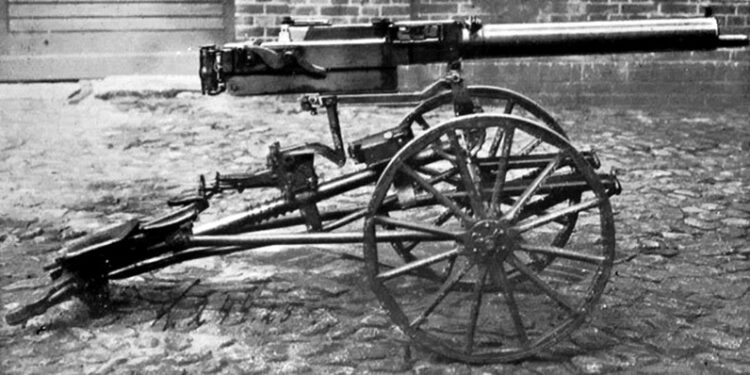By Jim Dickson
When the tank first appeared on the WWI battlefields at the Somme on September 15, 1916, the British Mark 1 tanks had armor ranging from 6mm to 10mm and, thus, the German armor piercing 8mm S.m.K. ammo was effective against them. The Mark III tank increased this to 12mm, and the Mark IV tank had 14mm armor. This led to the Germans fielding the 13mm Mauser bolt action anti-tank rifle, the Tanksgewehr M1918. It had a 37.8-inch barrel, an overall length of 5.5 feet and weighed 38 pounds with an MG 08-15 bipod. About 16,500 were made and it proved effective, but a machine gun firing the same round would be even more effective and would also work on aircraft with far better results than the 8mm cartridge.
At this time, armor was being added to the vital parts of aircraft and the 8mm round was reaching the limits of its effectiveness. The problem with the single shot, anti-tank rifle was that unless a vital spot was hit, the anti-tank rifle was vulnerable to the return fire of the tank. This problem was so severe that the anti-tank gunner needed to fire and quickly change positions for each shot. A very perilous solution.
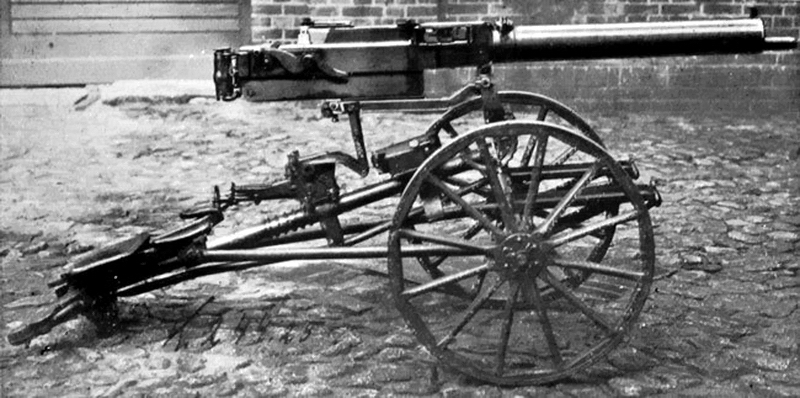
The War Ministry put out an urgent request for designs for such a 13mm machine gun in November of 1917 and the design of MG 08-15 producer Manschinenfabrik Augsberg-Nurnberg AG (MAN) was chosen.
Designed by the gifted engineer Konrad Haubner, the gun was an enlarged Maxim 08-15 and Konrad had developed a brilliant method of dealing with the increased recoil. A hydraulic recoil brake took care of the rearward motion of the gun while a recuperator spring brought the mechanism back to battery. This was patented, number 324,485, in early 1918. It worked so efficiently that the gun had a cyclic rate of just 300-rounds-per-minute. The gun was water cooled for sustained firing and also had a heavy barrel formed in two parts like an artillery barrel with an outer sleeve over the inner barrel. This made relining worn barrels much easier, plus the added weight soaked up recoil enabling the gun to be more compact while it also aided keeping the barrel from overheating.
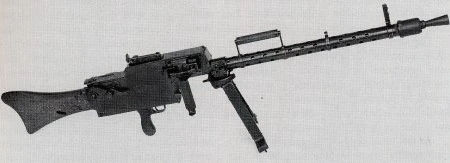
The compactness of this gun for the size of its cartridge is most striking, and, perhaps is best shown by the fact that it could be fitted with the MG 08-15 bipod for use in the anti-tank mode by just one or two men. This enabled it to remain lower and more concealed (or completely under cover) to suddenly pop out and blast an enemy tank. Something virtually impossible to do with a Browning M2 HB .50 caliber machine gun. The gun has the spade grips of the MG08 and weighs in at 81.6 pounds. Its length is 5.25 feet, and its barrel length is 37.8 inches. There was a wheeled carriage enabling this beast to be moved about fast to escape incoming artillery fire. This carriage weighed 189.6 pounds which brought the total weight up to 294.8 pounds when carriage mounted. I would like to have seen a Lafitte 34 mount scaled up to fit this gun, but that is another era. Certainly, a tripod mount would have been added–had the gun stayed in service long enough.
The best thing about the MG18 was the fact that it was the reliable, trouble-free Maxim design that could fire into the millions of rounds only changing barrels and keeping the water jacket filled. No other design of the time had the longevity under sustained firing as the Maxim.
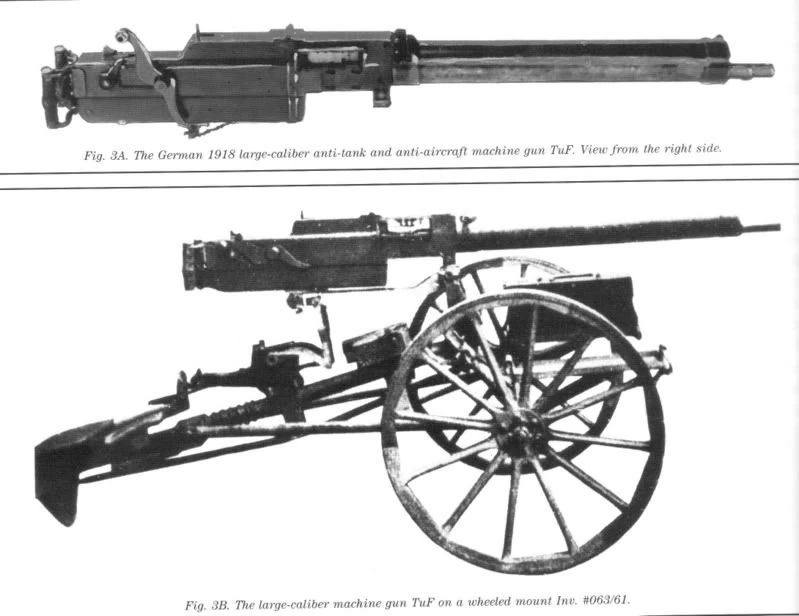
The cartridge was the 13×92 HR caliber. HR stands for “Halbrand mit Rille” meaning semi-rimmed. As such, it would hold its headspace longer than rimless cartridges as the barrels were shot out. Its projectile was made by Munitionsfabrik Polte in Magdeburg. Developed from the 8mm SmK armor piercing round, the bullet had a core of tungsten steel and could penetrate 24 millimeters of armor plate at 100 meters.
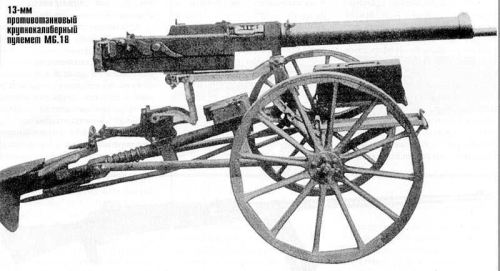
Proposals to increase the caliber first to 15mm and then to 18mm followed with the 18mm round capable of shooting through 35 millimeters of armor plate at 100 meters, but the war ended before any were prototyped. Of the 4000 initially ordered, around 50 were completed by wars-end and most of these were hidden from the Allies. The U.S. Army was not able to get its hands on one along with 82 rounds of ammunition until August of 1921. It was shipped back to Springfield Armory where it inspired the Browning .50 caliber machinegun. As the Browning does not hold up under continuous firing anywhere near as well as the Maxim machine guns, they would have done better to just adopt the German gun, but the intense hostility toward any German design prevented anything German from ever being adopted.



